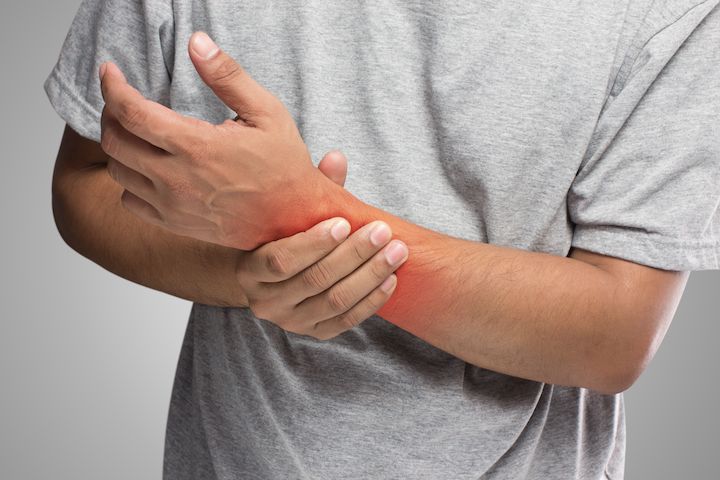Pain and injury of any kind affect millions of individuals worldwide and can range from mild discomfort to severe, chronic pain that significantly impacts an individual’s quality of life. Whether caused by injury, disease, or other factors, pain can be debilitating and requires effective management strategies to alleviate symptoms and promote recovery.
Pain can manifest in many ways, making it challenging to identify and treat. Understanding the various types of pain is crucial to managing it effectively and finding relief. Here are some of the most common types of pain:
Back pain is one of the most common types of pain, affecting over 80% of adults at some point in their lives. It can range from mild discomfort to debilitating pain and can be caused by a variety of factors, including poor posture, injury, or medical conditions such as arthritis or herniated discs. Treatment options for back pain range from physical therapy to medication to surgery.
Joint pain is another prevalent type of pain, affecting millions of people worldwide. It can be caused by a range of conditions, including arthritis, bursitis, and gout. Joint pain can be managed through medication, exercise, and lifestyle changes, depending on the underlying cause.
Headaches can be triggered by a host of factors, including stress, dehydration, fatigue, or underlying medical conditions. They can range from mild to severe, and some people experience chronic headaches that require medical intervention. Treatments for headaches vary depending on the type and severity of the headache, but options include medication, relaxation techniques, and lifestyle changes.
Muscle pain can be caused by a range of factors, including overuse, injury, or medical conditions such as fibromyalgia. Treatment options for muscle pain range from medication to massage therapy to physical therapy.
Nerve pain, also known as neuropathic pain, can be caused by damage to the nervous system due to injury or medical conditions such as diabetes or multiple sclerosis. Treating can be challenging, but options include medication, physical therapy, and alternative therapies such as acupuncture.

Photo Credit: Tharakorn Arunothai, Canva Photos
If you are experiencing pain and injury, it is essential to identify the type of pain you are experiencing and seek medical advice to receive the appropriate treatment.
Living with pain can be challenging, but managing it effectively to improve your quality of life is essential. While there are various pain relief medications available, it’s also possible to adopt more natural approaches.
Here are some natural pain and injury relief methods that you can try:
If you need clarification on any of these methods, consult with your doctor or a qualified practitioner for guidance.
While natural pain relief methods and lifestyle changes can help alleviate pain, sometimes professional help is needed to manage chronic pain effectively. Medical attention is especially crucial if the pain is persistent, severe, or accompanied by other symptoms.
The first step is to book an appointment with a healthcare professional who specialises in pain management. This could be a general practitioner, a physiotherapist, or a pain and injury specialist. These professionals can help identify the underlying cause of the pain and recommend treatment options tailored to your needs.
During the medical assessment, your doctor or specialist will ask about your symptoms, medical history, and any medications you are taking. They may also conduct a physical examination and order diagnostic tests, such as X-rays or MRI scans, to help identify the source of the pain.
After identifying the cause of pain, the healthcare professional will recommend appropriate treatment options. These may include medication, physical therapy, or a combination of both. In some cases, psychological therapies may also be prescribed, such as cognitive-behavioural therapy (CBT) or relaxation techniques.

Photo Credit: Capture Now, Canva Photos
It’s essential to follow the healthcare professional’s advice and treatment plan. Failure to follow the recommended course of treatment may lead to delayed recovery or worsening of symptoms of the pain and injury you are dealing with.
Along with the treatment plan, the healthcare professional may recommend pain relief tools and techniques, such as heat therapy or transcutaneous electrical nerve stimulation (TENS). These tools can help alleviate pain and improve mobility, enabling you to engage in daily activities more easily.
Remember that every individual’s experience with chronic pain is unique, and there is no one-size-fits-all approach to pain management. Seeking professional help is essential to identifying the best course of action for managing your pain and optimizing your overall well-being.
Pinched nerves can commonly cause pain and discomfort in several parts of the body. A pinched nerve occurs when there is pressure on a nerve from the surrounding tissues, such as bones, muscles, cartilage, or tendons, causing it to become irritated or compressed.
The symptoms of a pinched nerve can vary depending on the location of the compression. Some common symptoms include:
If you are experiencing these symptoms, seeking medical attention from a healthcare professional who can diagnose and treat your condition effectively is essential.

Photo Credit: Lifestyle Memory, Freepik
The treatment for a pinched nerve will depend on the compression’s severity and the affected nerve’s location. Some common treatments include:
It is important to seek professional help and follow the recommended treatment plan to effectively manage and alleviate the pain and injury discomfort associated with a pinched nerve.
Dealing with chronic pain can be overwhelming and exhausting, affecting every aspect of your life. While finding a quick fix may seem appealing, it is important to focus on long-term pain relief strategies that address the root cause of your pain. Here are some practical tips and approaches to help you manage your chronic pain effectively:
Medications are often used to manage chronic pain, but working with your healthcare professional is crucial to find the right medication and dosage that works for you. Depending on the type and severity of your pain, different medications may be prescribed, including painkillers, anti-inflammatory drugs, or antidepressants.
Physical therapy can be an effective way to manage chronic pain, especially for muscle or joint pain conditions. A physical therapist can work with you to develop a personalized exercise program, teach you proper posture and body mechanics, and provide pain relief techniques, such as massage and stretching.
Living with chronic pain can take a toll on your mental health, so addressing psychological factors contributing to your pain is essential. Psychological approaches, such as cognitive-behavioural therapy or mindfulness meditation, can help you manage the emotional aspect of chronic pain and develop coping mechanisms.
Alternative therapies, such as acupuncture, chiropractic care, and herbal supplements, can provide additional pain relief options for individuals with chronic pain. Consult with your healthcare professional before trying any alternative therapy, as they may interact with other medications or worsen your condition.

Photo Credit: RDNE Stock Project, Pexels
Combining different long-term pain relief strategies can help you manage your chronic pain and improve your quality of life. Remember to stay patient and consistent and communicate with your healthcare professional throughout the process.
Pain is a common experience that can significantly impact an individual’s quality of life. If you are searching for answers to your pain and injury-related questions, you have come to the right place. Here are some frequently asked questions about pain management that may help you better understand the topic.
Chronic pain is a persistent condition, and effective management often involves a combination of approaches, including medication, physical therapy, psychological therapy, and lifestyle changes. It is essential to consult a healthcare professional to determine an appropriate treatment plan that suits your specific needs.
Some non-medical treatments that may help alleviate pain include heat and ice therapies, massage, acupuncture, chiropractic care, and meditation. These approaches can help reduce inflammation, improve circulation, relax muscles, and promote healing.
Taking pain medication for an extended period can come with risks, such as developing tolerance or addiction. Therefore, following a healthcare professional’s advice and taking medication only as prescribed is essential. Regular check-ins with your doctor can ensure that you are taking the appropriate medication at the right dose for the desired effect.
Diet can be a contributing factor to pain. Certain foods can cause inflammation, which can exacerbate pain conditions. On the other hand, some foods, such as those rich in omega-3 fatty acids, can help alleviate pain. Consult a healthcare professional or a registered dietitian for personalised dietary advice.
Psychological therapy can be an effective approach to managing pain and injury, particularly chronic pain conditions. Techniques such as cognitive-behavioural therapy, mindfulness, and relaxation training can help individuals learn to cope with pain and reduce stress, anxiety, and depression associated with pain conditions.
If you have any further questions related to pain management, don’t hesitate to speak to your healthcare provider for more information and guidance. Effective pain management can help improve your quality of life and overall well-being.